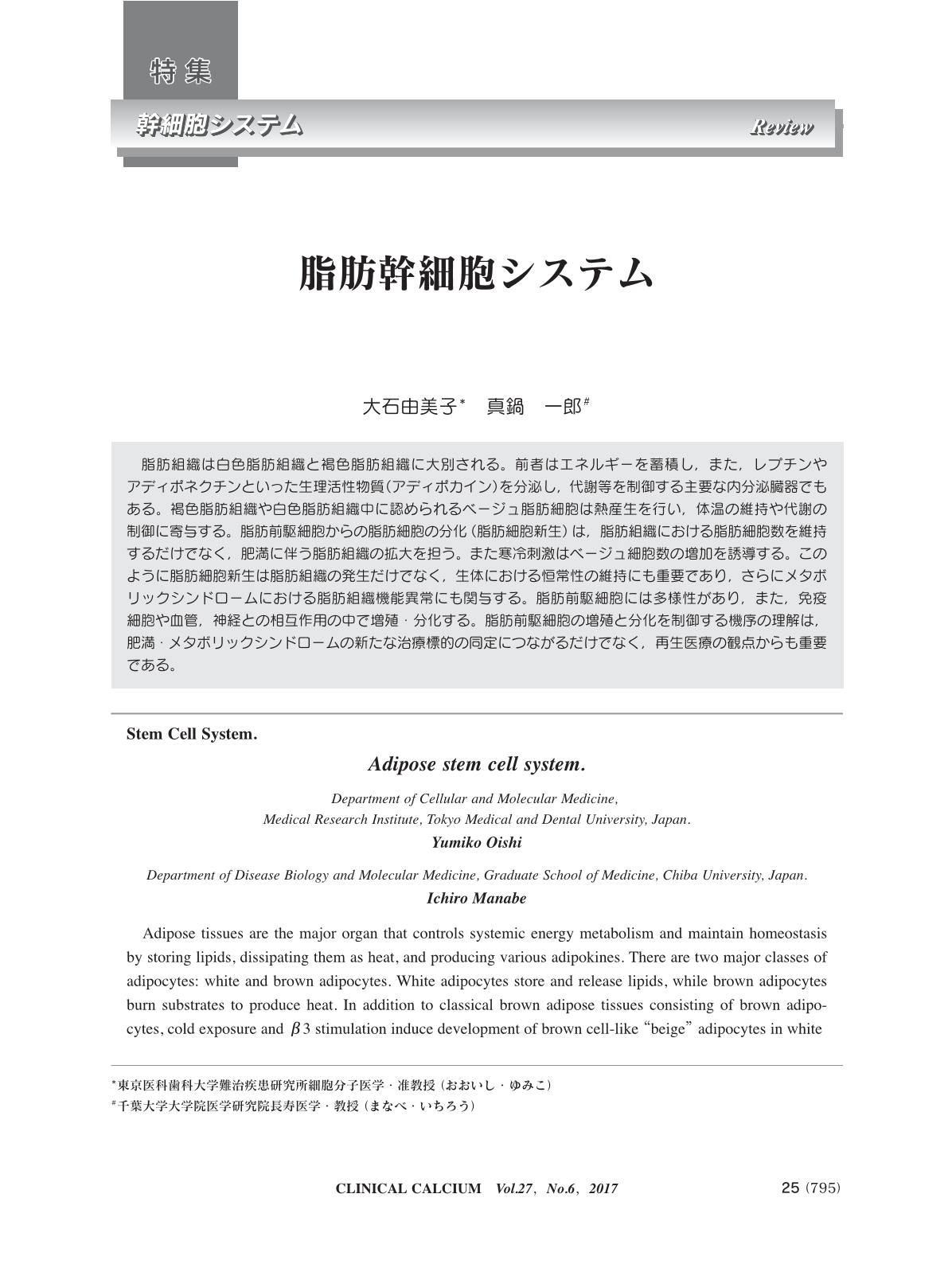Japanese
English
- 有料閲覧
- Abstract 文献概要
- 1ページ目 Look Inside
- 参考文献 Reference
脂肪組織は白色脂肪組織と褐色脂肪組織に大別される。前者はエネルギーを蓄積し,また,レプチンやアディポネクチンといった生理活性物質(アディポカイン)を分泌し,代謝等を制御する主要な内分泌臓器でもある。褐色脂肪組織や白色脂肪組織中に認められるベージュ脂肪細胞は熱産生を行い,体温の維持や代謝の制御に寄与する。脂肪前駆細胞からの脂肪細胞の分化(脂肪細胞新生)は,脂肪組織における脂肪細胞数を維持するだけでなく,肥満に伴う脂肪組織の拡大を担う。また寒冷刺激はベージュ細胞数の増加を誘導する。このように脂肪細胞新生は脂肪組織の発生だけでなく,生体における恒常性の維持にも重要であり,さらにメタボリックシンドロームにおける脂肪組織機能異常にも関与する。脂肪前駆細胞には多様性があり,また,免疫細胞や血管,神経との相互作用の中で増殖・分化する。脂肪前駆細胞の増殖と分化を制御する機序の理解は,肥満・メタボリックシンドロームの新たな治療標的の同定につながるだけでなく,再生医療の観点からも重要である。
Adipose tissues are the major organ that controls systemic energy metabolism and maintain homeostasis by storing lipids, dissipating them as heat, and producing various adipokines. There are two major classes of adipocytes: white and brown adipocytes. White adipocytes store and release lipids, while brown adipocytes burn substrates to produce heat. In addition to classical brown adipose tissues consisting of brown adipocytes, cold exposure and β3 stimulation induce development of brown cell-like “beige” adipocytes in white adipose tissues. There appear to be multiple adipocyte progenitor cell populations of different developmental origins. In this article, we overview white and brown/beige adipocyte differentiation in development and obesity. Adipocytes differentiate in complex interplays with various stromal cells, including vascular, immune and neuronal cells. Elucidation of the cellular interplays would lead to identification of novel therapeutic targets for obesity and metabolic syndrome.



